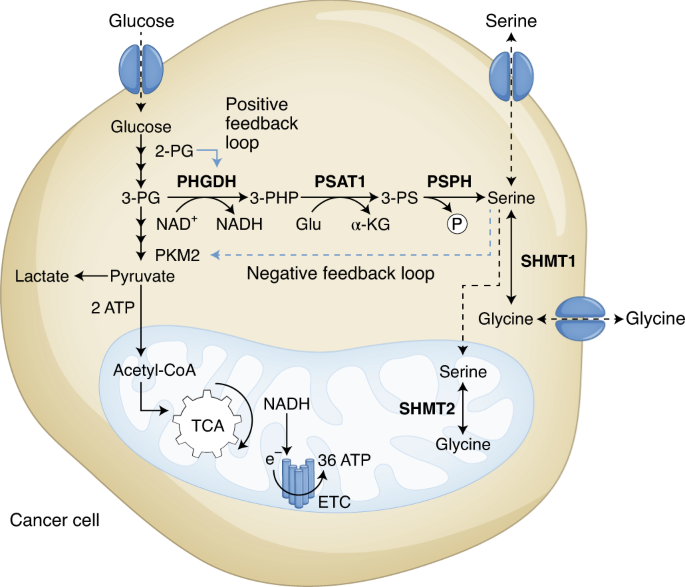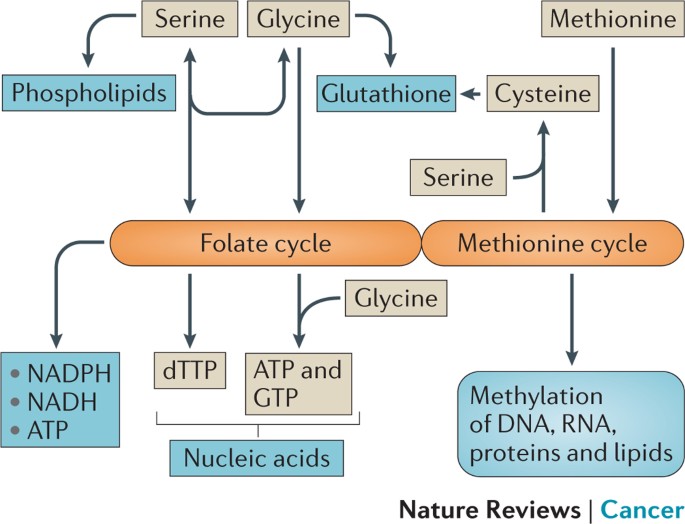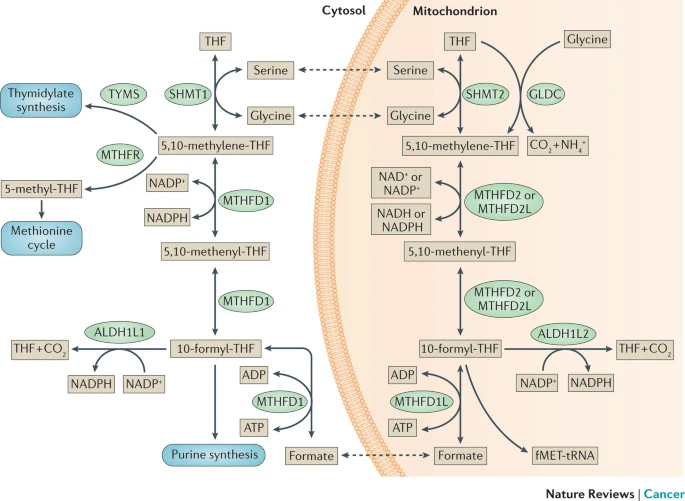Glycine is the smallest of the twenty amino acids commonly found in proteins.

As glycine is highly represented in proteins not easily digested, whilst serine is largely available in foods or from glucose catabolism, the limiting step in glycine availability are the enzymes involved in its synthesis: phosphoglycerate dehydrogenase (PHGDH), phosphoserine aminotransferase (PSAT1), phosphoserine phosphatase (PSPH), and serine hydroxymethyltransferase (GHMT).

Phosphoglycerate Dehydrogenase: Potential Therapeutic Target and Putative Metabolic Oncogene, 2014

The ins and outs of serine and glycine metabolism in cancer, 2021
- Cancer cells reprogramme their metabolism to support unrestrained proliferation and survival in nutrient-poor conditions. Whereas non-transformed cells often have lower demands for serine and glycine, several cancer subtypes hyperactivate intracellular serine and glycine synthesis and become addicted to de novo production. Copy-number amplifications of serine- and glycine-synthesis genes and genetic alterations in common oncogenes and tumour-suppressor genes enhance serine and glycine synthesis, resulting in high production and secretion of these oncogenesis-supportive metabolites. In this Review, we discuss the contribution of serine and glycine synthesis to cancer progression. By relying on de novo synthesis pathways, cancer cells are able to enhance macromolecule synthesis, neutralize high levels of oxidative stress and regulate methylation and tRNA formylation. Furthermore, we discuss the immunosuppressive potential of serine and glycine, and the essentiality of both amino acids to promoting survival of non-transformed neighbouring cells. Finally, we point to the emerging data proposing moonlighting functions of serine- and glycine-synthesis enzymes and examine promising small molecules targeting serine and glycine synthesis.
Enzymes involved in Gly synthesis


PHGDH = SERA
PSAT1 = SERC
PSPH = SERB
GHMT. = GLYC
Glycine dependent pathways

p=- 


Serine and one-carbon metabolism in cancer, 2016. fulltext
more glycine (or more serine) more methylene THF? The reaction is really bidirectional?

Glycine is involved in many anabolic reactions other than protein synthesis including the synthesis of :


The innate immune kinase IKKε as a novel regulator of PSAT1 and serine metabolism, 2018
IKKs
Polymorphisms in serine hydroxymethyltransferase 1 and methylenetetrahydrofolate reductase interact to increase cardiovascular disease risk in humans 2011
Limits of glycine synthesis
A weak link in metabolism: the metabolic capacity for glycine biosynthesis does not satisfy the need for collagen synthesis, 2009
Creatine synthesis pathway
Ablation of adipocyte creatine transport impairs thermogenesis and causes diet-induced obesity, 2019
Poca glycina poca creatina obesità